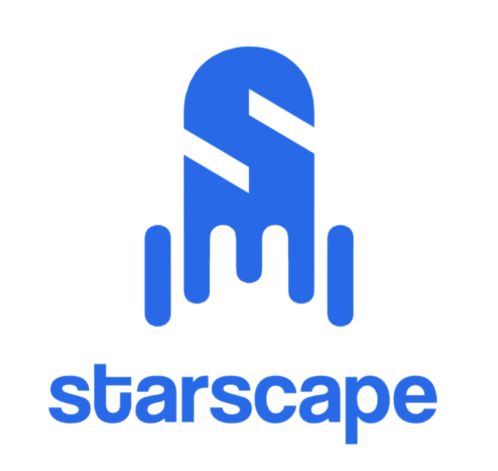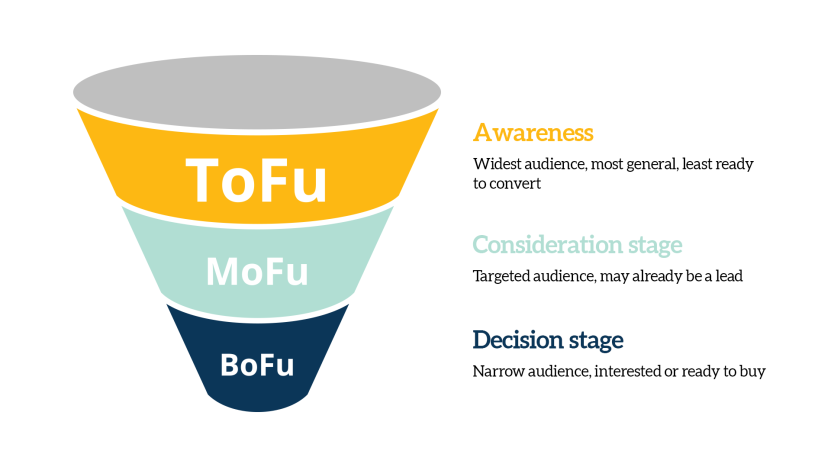For years, the marketing world has relied on the classic funnel framework: ToFu (Top of Funnel), MoFu (Middle of Funnel), and BoFu (Bottom of Funnel).
This structure has helped businesses conceptualize the customer journey from awareness to decision-making.
However, as consumer behavior evolves and the digital landscape becomes more complex, the traditional funnel model is beginning to show its age.
The Traditional Funnel Explained
The ToFu-MoFu-BoFu framework describes the customer’s journey through three distinct stages:
- Top of Funnel (ToFu): At this stage, potential customers become aware of a problem or need. Marketing efforts focus on attracting attention through content like blog posts, social media, and educational materials.
- Middle of Funnel (MoFu): This stage involves nurturing leads who have shown initial interest. Businesses provide deeper insights through case studies, webinars, or product comparisons to guide potential customers toward a decision.
- Bottom of Funnel (BoFu): At the final stage, leads are ready to make a purchase decision. Businesses offer free trials, product demos, or special promotions to convert these prospects into paying customers.
This linear model suggests a clear, step-by-step path toward conversion. While it worked well in a simpler marketing environment, today’s customer journeys are far from linear.
The Problem with a Linear Funnel
Modern consumers do not follow a predictable, sequential path. With access to vast amounts of information, buyers can enter and exit the funnel at multiple points, revisit earlier stages, or bypass some stages entirely. Several issues make the traditional funnel model increasingly obsolete:
- Non-Linear Customer Journeys: Customers today interact with brands in a variety of ways, often moving back and forth between stages. For example, someone might discover a product through a friend (BoFu), then read educational content (ToFu) before deciding to buy.
- Omnichannel Complexity: Consumers engage across multiple touchpoints – social media, email, search engines, and even offline experiences. The traditional funnel fails to capture the complexity of these interactions, where each touchpoint may serve different functions simultaneously.
- Longer Decision Cycles: In industries with complex or high-ticket purchases, decision-making is often more prolonged. Prospects may cycle through research and consideration multiple times before committing, blurring the lines between funnel stages.
- Consumer Control: Buyers now control their journey more than ever. With extensive self-service research available, customers can gather information without engaging directly with sales teams until they are ready to buy.
New Models for the Modern Buyer
Given the limitations of the classic ToFu-MoFu-BoFu model, marketers are embracing new frameworks better suited to today’s digital environment. Three alternative models stand out: the Flywheel, the Customer Loop, and the Micro-Funnel approach.
- The Flywheel Model: Popularized by HubSpot, the Flywheel model emphasizes momentum and customer satisfaction. Instead of a one-way funnel, the Flywheel focuses on attracting, engaging, and delighting customers in a continuous cycle. Happy customers become brand advocates, fueling further growth.
- The Customer Loop: This model suggests that the buying process is iterative rather than linear. Prospects loop through awareness, consideration, and decision stages multiple times before making a purchase. It reflects the reality that customers often revisit earlier research before deciding.
- Micro-Funnels: Rather than viewing the customer journey as one big funnel, the Micro-Funnel approach treats each interaction as a self-contained journey. A single piece of content, like a product demo, can simultaneously attract (ToFu), engage (MoFu), and convert (BoFu).
Why Abandoning the Funnel Improves Marketing
Moving beyond the funnel opens new opportunities to engage modern buyers more effectively. Here are some benefits of adopting a more flexible, customer-centric model:
- Better Customer Experience: Non-linear models allow marketers to meet customers where they are, delivering relevant content and support at any stage of the journey. This personalization improves the overall customer experience and increases trust.
- Enhanced Attribution: Traditional funnels struggle to attribute conversions accurately due to their rigid structure. Modern models better capture multi-touchpoint journeys, offering clearer insights into what drives engagement and sales.
- Increased Agility: Marketing teams using iterative models can respond faster to changing customer needs. This adaptability is crucial in fast-moving industries where buyer preferences and behaviors shift rapidly.
- Stronger Customer Retention: Models like the Flywheel emphasize post-purchase engagement, encouraging long-term customer relationships. Retaining satisfied customers often costs less than acquiring new ones and generates ongoing revenue.
Implementing a Post-Funnel Strategy
To transition from the ToFu-MoFu-BoFu model, businesses should adopt a more dynamic and customer-first approach. Here are key steps to get started:
- Map Customer Touchpoints: Identify all potential interactions a customer might have with your brand. Consider digital, in-person, and post-purchase touchpoints.
- Invest in Omnichannel Integration: Ensure a seamless experience across all channels. Customers should receive consistent messaging whether they interact via social media, email, or your website.
- Personalize the Journey: Use data to deliver personalized experiences at each stage. This includes dynamic content recommendations, behavior-based email sequences, and targeted offers.
- Measure and Optimize Continuously: Move beyond simple funnel metrics. Track engagement across the customer lifecycle, from first touch to post-purchase satisfaction.
Conclusion
The traditional ToFu-MoFu-BoFu funnel no longer reflects the realities of modern consumer behavior. As customer journeys become more fluid and complex, businesses must adopt models that prioritize continuous engagement and adaptability.
Whether through the Flywheel, Customer Loop, or Micro-Funnels, breaking free from the rigid funnel structure empowers marketers to meet customers where they are and build lasting relationships. Embracing these modern approaches positions businesses to thrive in today’s ever-evolving digital landscape.

